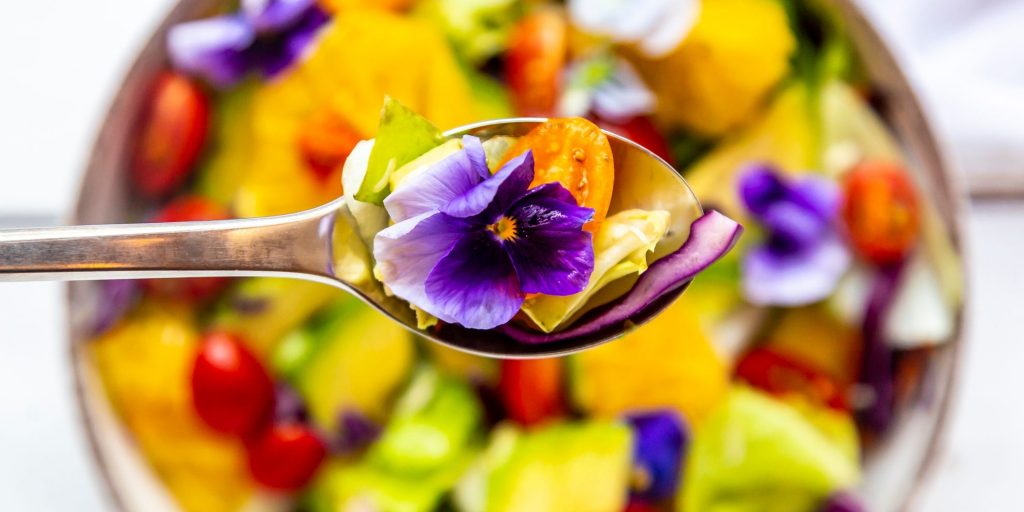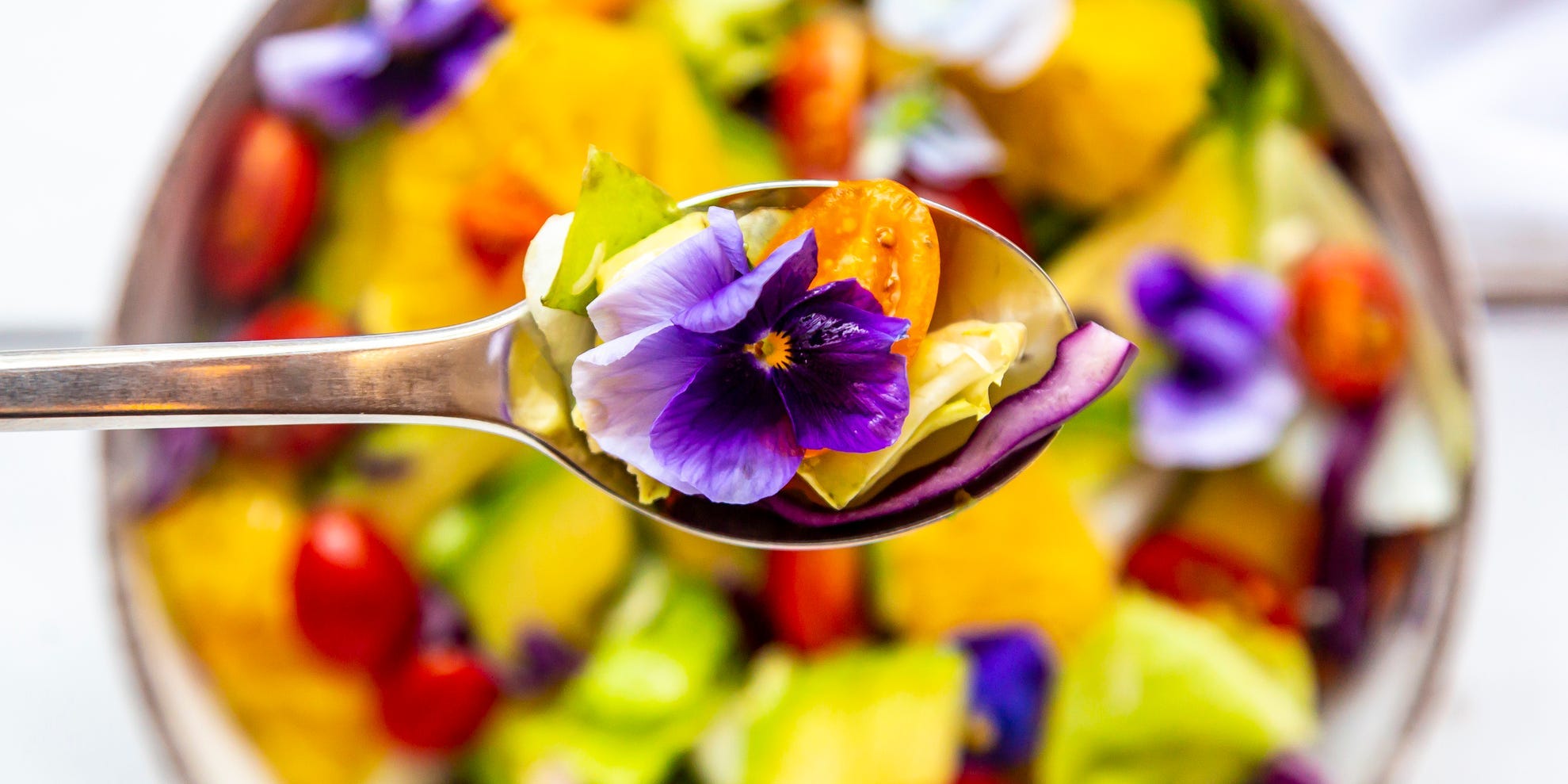
Westend61/Getty Images
- Edible flowers are great garnishes for desserts, drinks, and charcuterie boards.
- It's important to confirm that a flower is actually edible before using it in a dish.
- You can harvest edible flowers from your own garden.
- Visit Insider's Home & Kitchen Reference library for more stories.
While dishes and drinks can be dressed up with sprinkles, sauces, and citrus garnishes, there's another type of garnish that may be even prettier. Edible flowers are a beautiful addition to a variety of food and beverage options, immediately enhancing the look and sometimes even the flavor of a dish.
"Edible flowers are a wonderful way to bring the beauty of nature straight to your plate," says Alexandra Griffin, founder and CEO of Alma Kitchen. "When chosen properly, edible flowers bring their own unique flavor which can complement or add complexity to a dish."
According to Griffin, the uses and applications of edible flowers are seemingly endless. Some edible flowers can add robust flavor to a dish, while other blooms serve as fancy flourishes for desserts and cocktails to fit a color scheme or theme. "They can be dried, sugared, or used fresh depending on the application," she says.
Where to get edible flowers
Edible flowers can be picked straight from your garden, just be sure to prep them properly. Once picked, shake out the flowers to remove any bugs tucked away in the petals. If you can't grow them on your own, look to stores that offer organically grown flowers. Stay away from picking roadside flowers or flowers found in a park to avoid eating a flower that's been sprayed with pesticides or herbicides.
Types of edible flowers
It's important to remember that not all flowers, or parts of a flower, are edible. Each flower has different requirements to be prepared for eating, and each flower may also impart a different flavor to a dish. Before using edible flowers, gently immerse them in water to remove any dirt or hiding insects and pat them dry with a paper towel.
Hibiscus
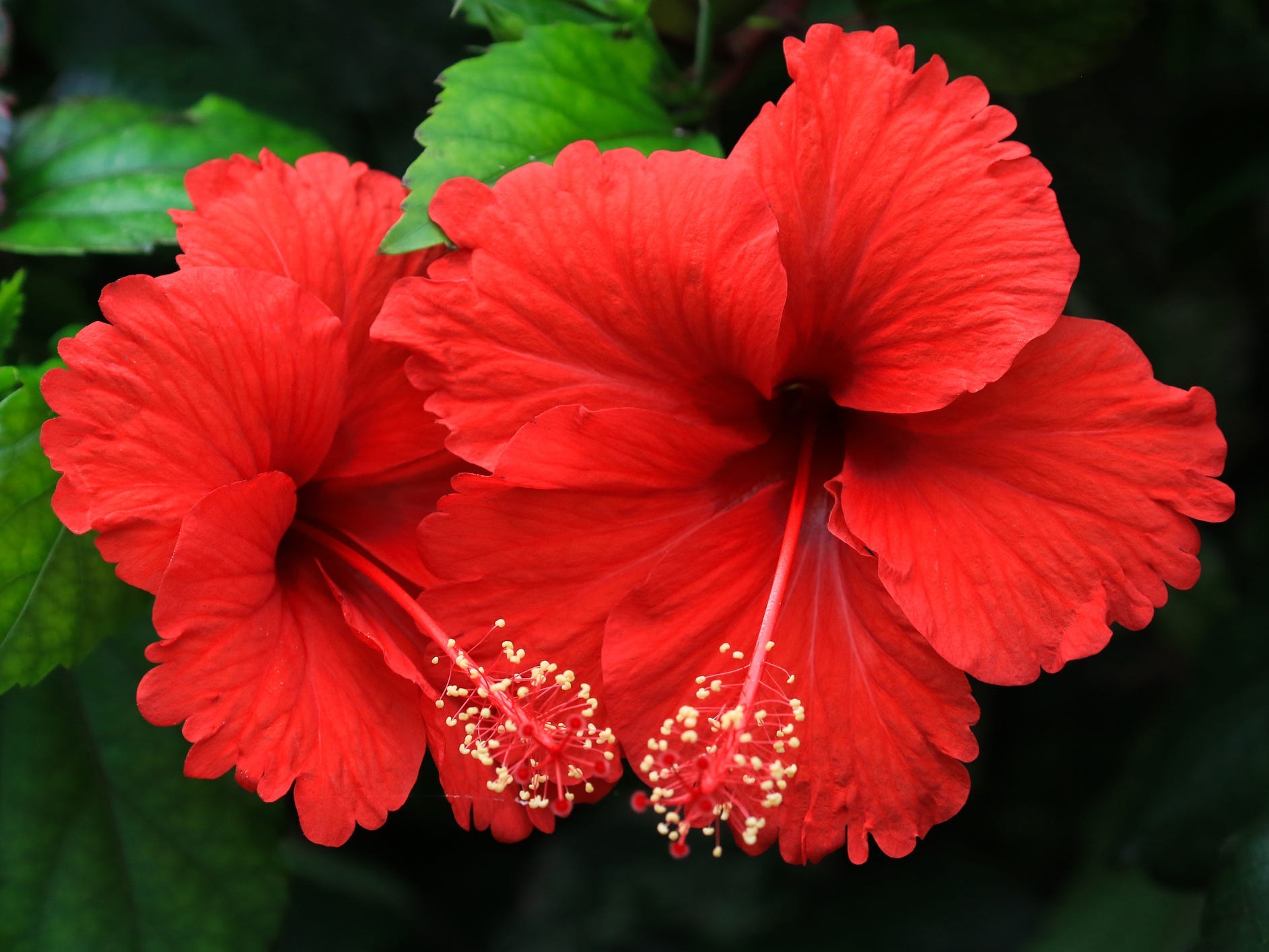
Daniela Duncan/Getty Images
Bright, bold hibiscus blooms are typically only grown in tropical climates, but it is possible to grow them at home with the right conditions. The flower - which offers a balanced, tart flavor, similar to a pomegranate - can be plucked right off the plant and eaten on its own, included in salads, used as a cocktail garnish, or made into a tea.
Honeysuckle
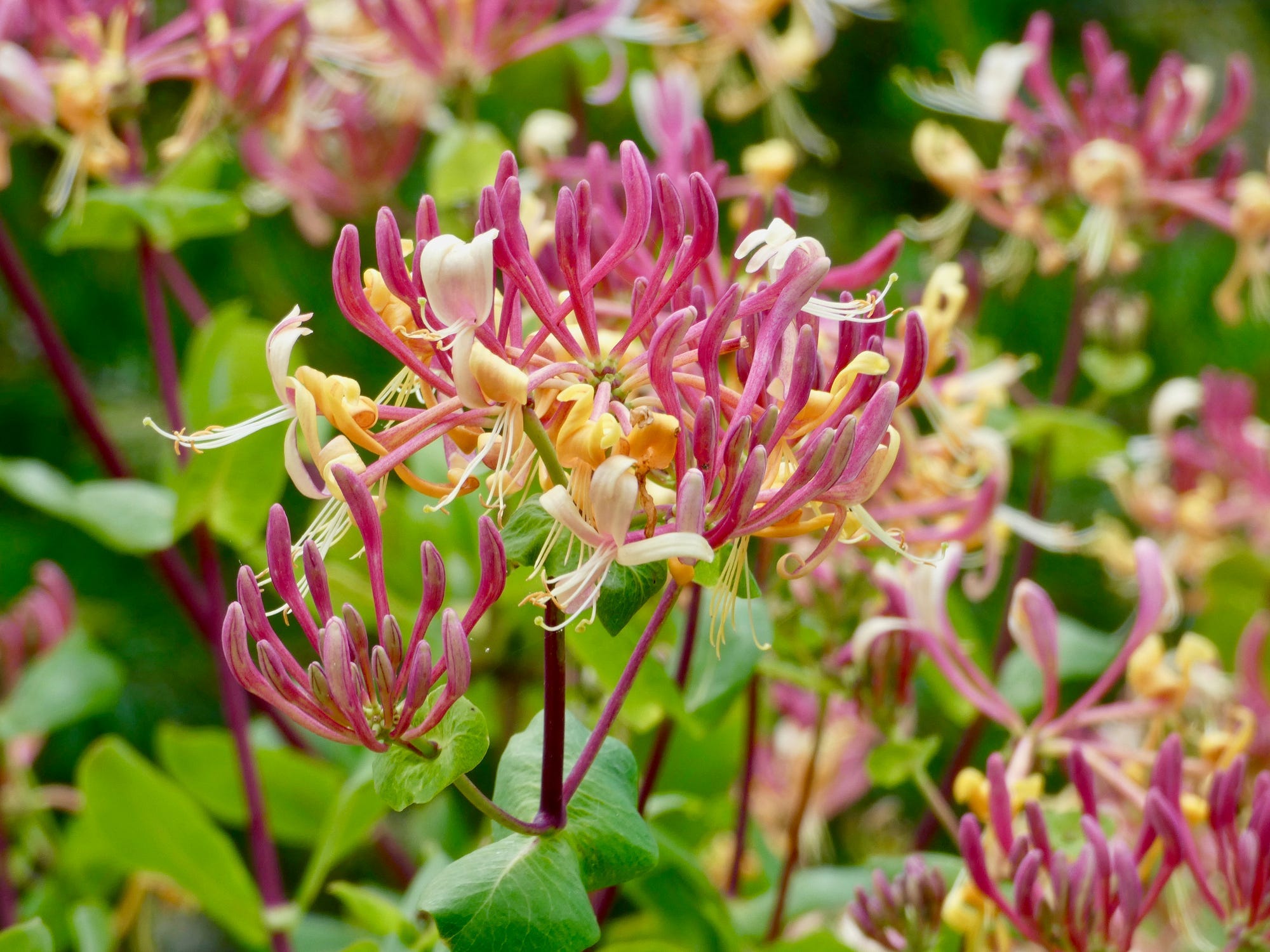
Caroline Gauvin/Getty Images
Delicate honeysuckle blooms are incredibly fragrant, and they contain sweet nectar that can be enjoyed right from the flower. The flower and nectar are both safe to eat, but avoid the berries as they're poisonous. The flowers can be added to ice cubes, popsicles, or used as a garnish. In addition, the fresh flowers can be used to make a honeysuckle syrup by boiling them with water until the liquid reduces by half. Once reduced, strain the syrup and add sugar before bottling it.
Marigolds
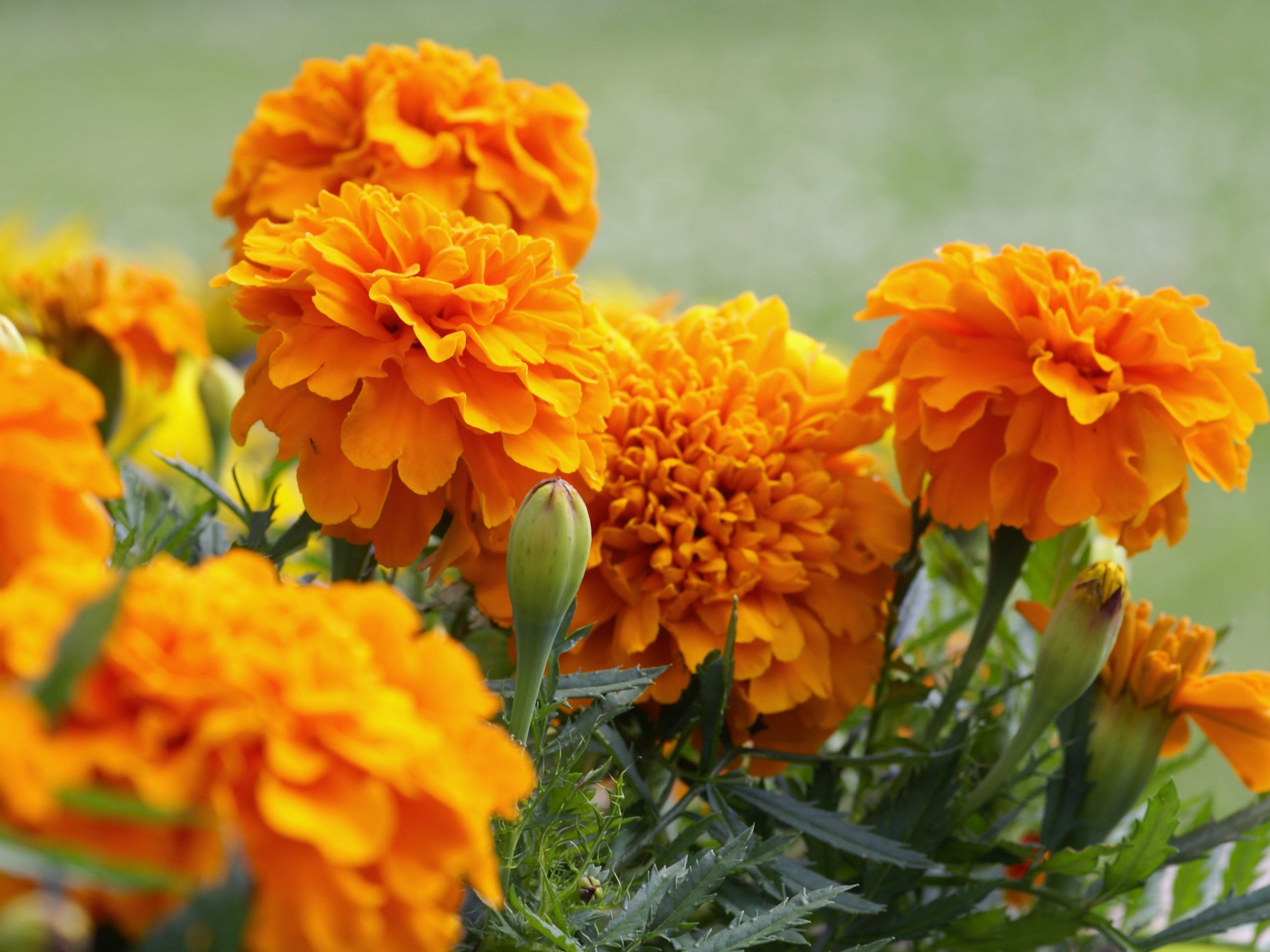
schnuddel/Getty Images
Marigolds bloom in bright yellow and orange citrus hues. The petals have a mild citrus flavor to them, but avoid using the leaves since they're quite spicy. To prepare marigolds, pull off the petals and trim the white ends which taste quite bitter. Use these large petals to add color and texture to a dish. The bold petals make a beautiful addition to ice cubes, a flavorful pop of color to a salad, and lovely garnishes for desserts.
Pansies
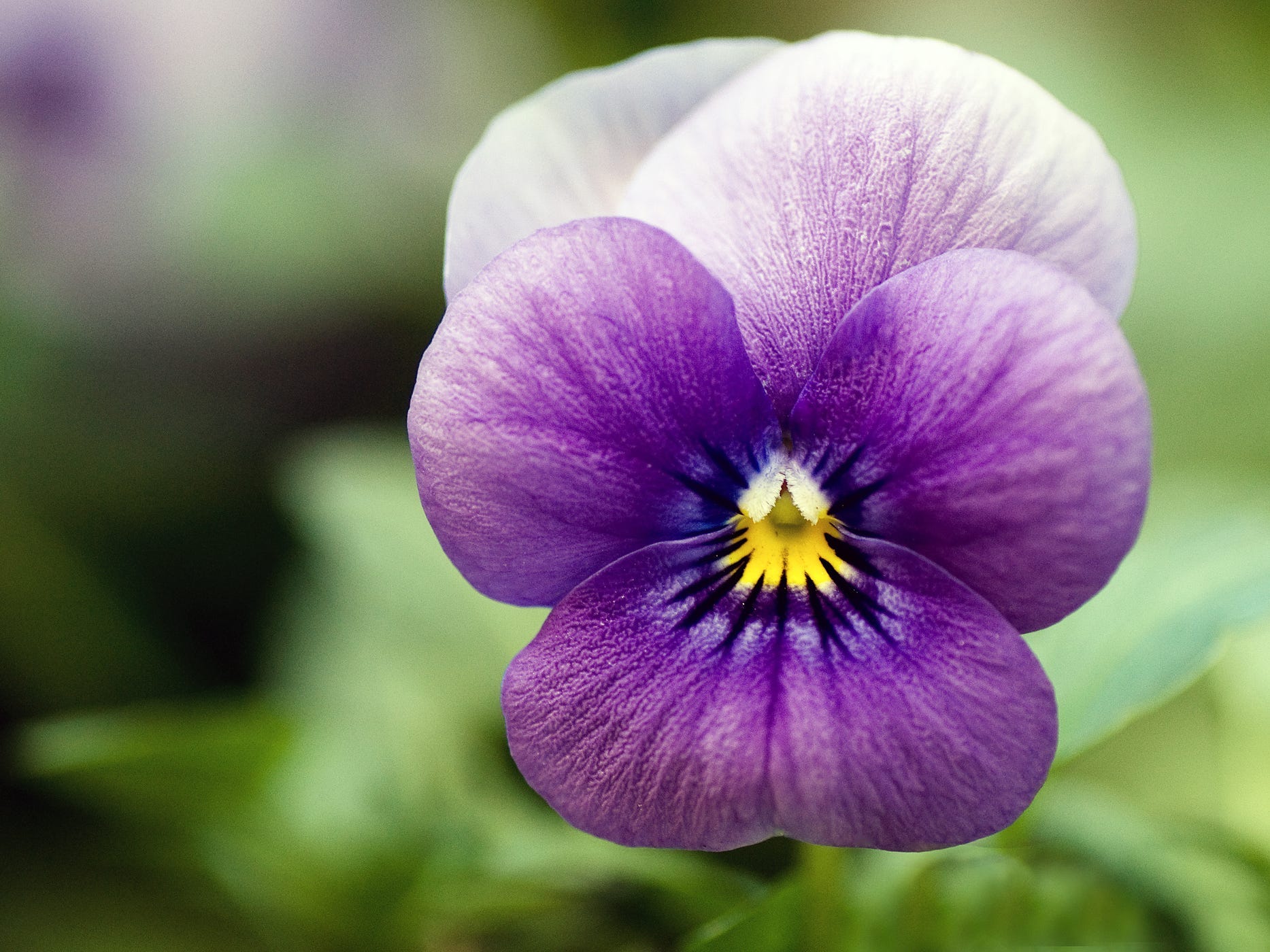
Images by Christina Kilgour/Getty Images
Pansies are large floppy flowers that start blooming in spring. They come in a variety of colors and have a mild grassy flavor with a touch of spice. The entire flower can be snipped and eaten whole, used as a garnish for many savory dishes, or sugared to dress up a dessert.
Peonies
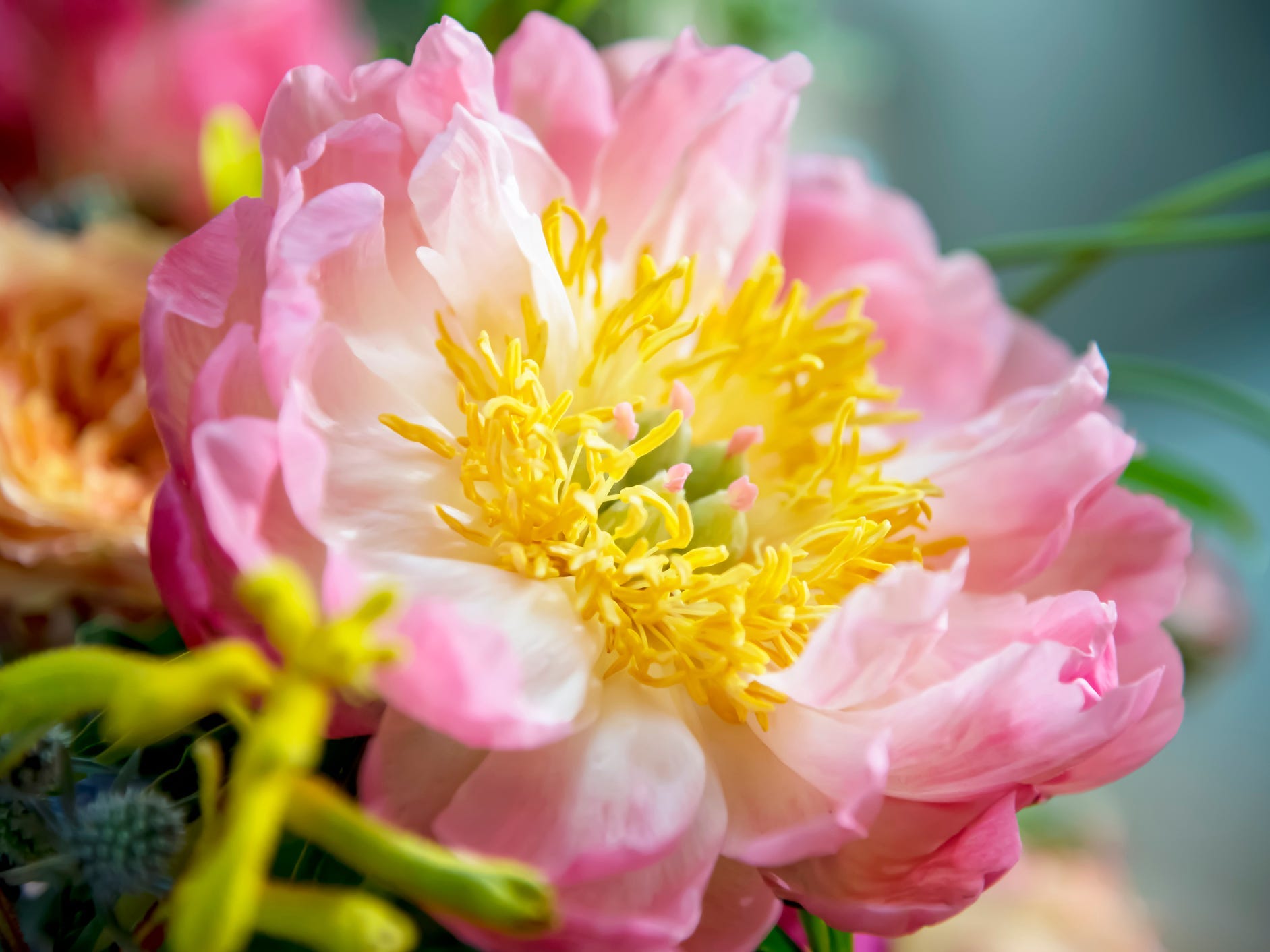
Kriangkrai Thitimakorn/Getty Images
Peonies are one of the stars of springtime with their large fluffy petals and bold fragrance. The root and leaves shouldn't be eaten, but the petals can be plucked off to add a floral and fruity flavor to enhance cocktails or jams or used to add a pop of color to dress up confections.
Roses
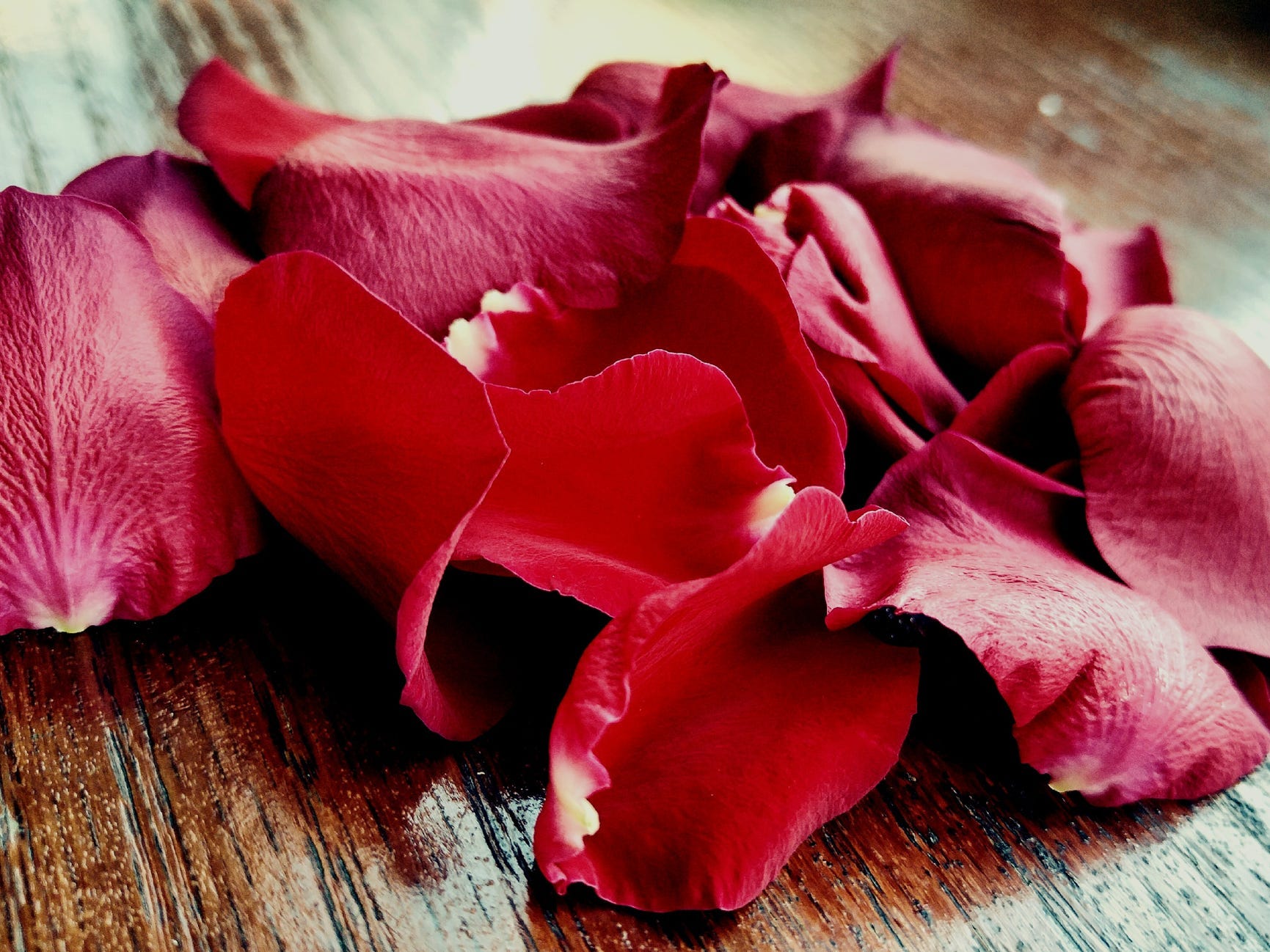
Genesis Delarosa / EyeEm/Getty Images
Roses are a classic choice, with a variety of color options. The flavor of the leaves and stem isn't very appealing, however rose petals generally offer a slightly sweet, floral flavor. But remember: each species of rose will have a different flavor. Found in many gardens and stores, rose petals can be used in desserts, added to salads, muddled for beverages, or dried for teas.
Sweet alyssum
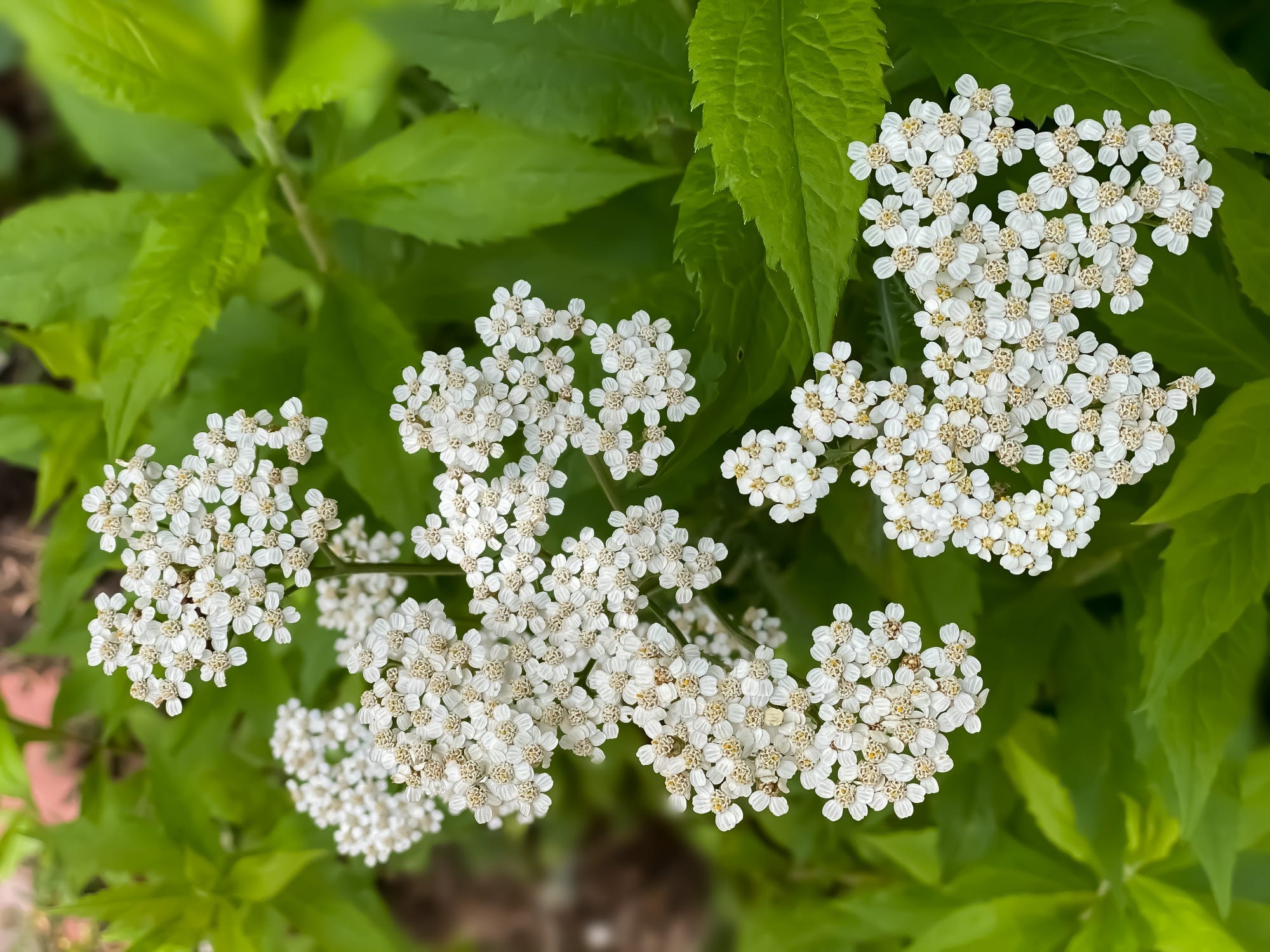
Catherine McQueen/Getty Images
Sweet alyssum is a flowering plant with dainty white blossoms. You can pick off sprigs and use them to decorate the top of cupcakes or a cake, or add whole sprigs to a salad. They have a gentle peppery flavor and can be grown in just about any type of soil.
Tulips
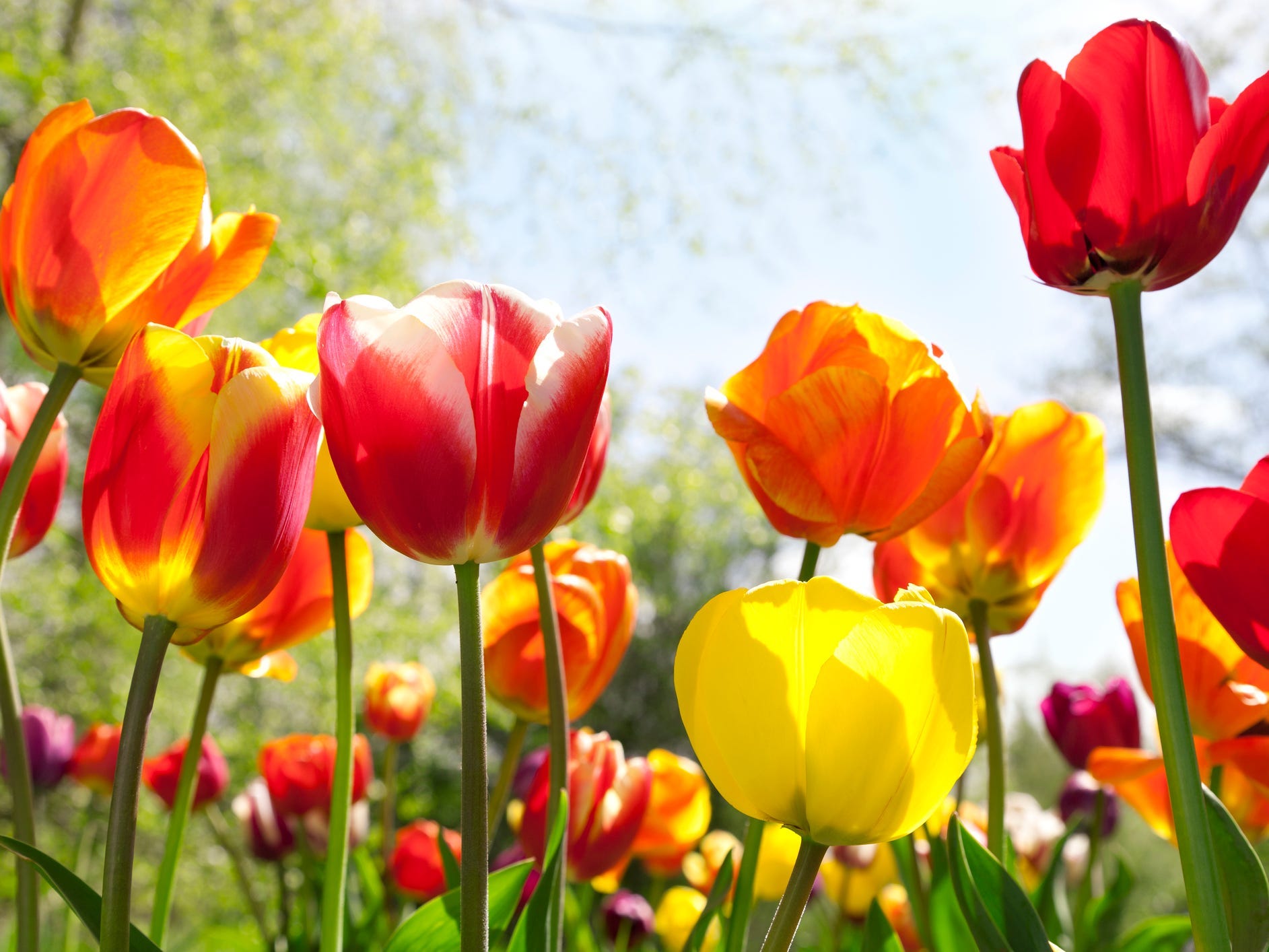
Steve Satushek/Getty Images
A springtime bloom, tulips offer large, bright petals. The bulbs can be toxic to humans and animals, but the petals are edible. Once the pistil and stamen are removed, petals can be used whole and added to a salad - incorporating a crunchy texture and a slight peppery taste. The definitive flavor and texture will depend on the tulip variety. Tulips can also be stuffed with a cheese spread as an appetizer, or even filled with chocolate mousse for a unique dessert.
Violas
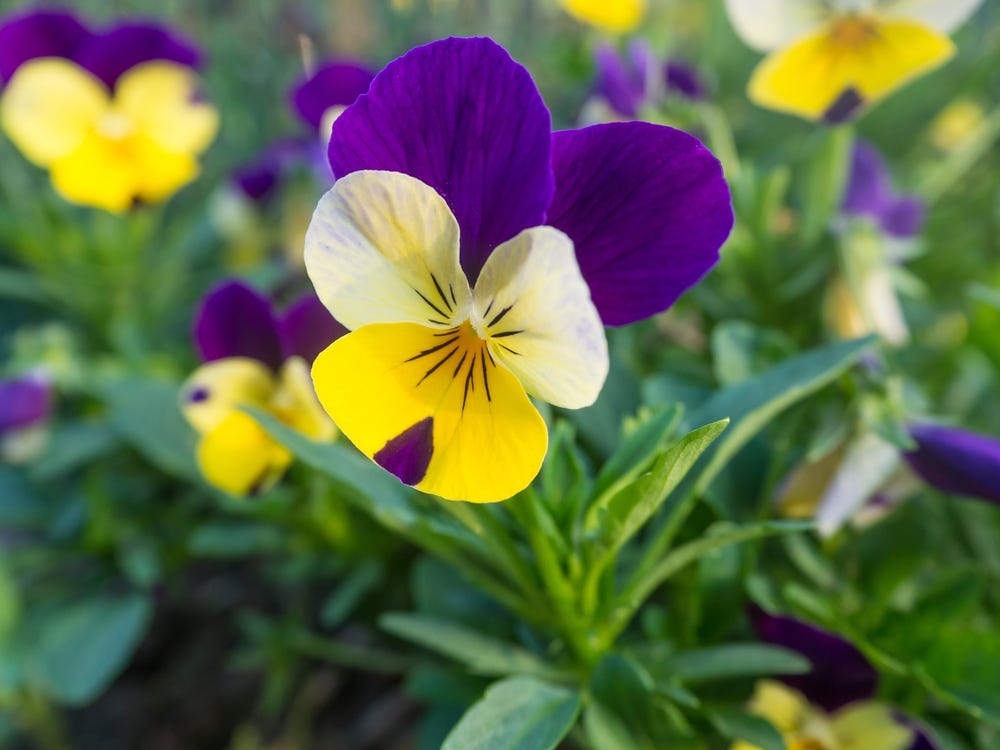
Kristyna Henkeova/Shutterstock
Violas are the beautiful, slightly smaller, cousin of pansies. They grow well in just about any environment, producing a bounty of flowers with a mild lettuce-like flavor with a hint of sweetness. You can eat the entire flower raw, add them to salads, or blend chopped petals into a dip or cheese spread. Violas are also a pretty garnish for drinks and desserts.
Insider's takeaway
Edible flowers are a beautiful and unique option for garnishes, whether you're putting together a colorful dessert or serving a cocktail. Edible flowers can also add great texture and flavor to savory dishes such as soups, salads, and appetizers. Just remember that only certain types of flowers are edible and it's important to source homegrown or organically grown flowers to avoid consuming pesticides or herbicides.
